Risk Assessment Method of Solar Smart Grid Network Security Based on TimesNet Model
Abstract
:1. Introduction
2. Related Works
3. SSG-NSR Evaluation
3.1. SGTBD Model Based on TimesNet
3.2. SGID Model Based on Bi-LSTM
4. Analysis of the Results of NSR Evaluation for Smart Grid
4.1. Performance Analysis of SGTBD Model
4.2. Performance Analysis of SGID Model
5. Conclusions
Author Contributions
Funding
Institutional Review Board Statement
Informed Consent Statement
Data Availability Statement
Conflicts of Interest
References
- Li, Y.; Yan, J. Cybersecurity of smart inverters in the smart grid: A survey. IEEE Trans. Power Electron. 2022, 38, 2364–2383. [Google Scholar]
- Bhattarai, T.N.; Ghimire, S.; Mainali, B.; Gorjian, S.; Treichel, H.; Paudel, S.R. Applications of smart grid technology in Nepal: Status, challenges, and opportunities. Environ. Sci. Pollut. Res. 2023, 30, 25452–25476. [Google Scholar] [CrossRef]
- Li, Y.; Wei, X.; Li, Y.; Dong, Z.; Shahidehpour, M. Detection of false data injection attacks in smart grid: A secure federated deep learning approach. IEEE Trans. Smart Grid 2022, 13, 4862–4872. [Google Scholar] [CrossRef]
- Li, J.; Gu, C.; Xiang, Y.; Li, F. Edge-cloud computing systems for smart grid: State-of-the-art, architecture, and applications. J. Mod. Power Syst. Clean Energy 2022, 10, 805–817. [Google Scholar] [CrossRef]
- Kim, Y.; Hakak, S.; Ghorbani, A. Smart grid security: Attacks and defence techniques. IET Smart Grid 2023, 6, 103–123. [Google Scholar] [CrossRef]
- Tuo, M.; Li, X. Security-constrained unit commitment considering locational frequency stability in low-inertia power grids. IEEE Trans. Power Syst. 2022, 38, 4134–4147. [Google Scholar] [CrossRef]
- Syrmakesis, A.D.; Alcaraz, C.; Hatziargyriou, N.D. Classifying resilience approaches for protecting smart grids against cyber threats. Int. J. Inf. Secur. 2022, 21, 1189–1210. [Google Scholar] [CrossRef]
- Vahidi, S.; Ghafouri, M.; Au, M.; Kassouf, M.; Mohammadi, A.; Debbabi, M. Security of wide-area monitoring, protection, and control (WAMPAC) systems of the smart grid: A survey on challenges and opportunities. IEEE Commun. Surv. Tutor. 2023, 25, 1294–1335. [Google Scholar] [CrossRef]
- Park, K.S.; Lee, J.Y.; Das, A.K.; Park, Y. BPPS: Blockchain-enabled privacy-preserving scheme for demand-response management in smart grid environments. IEEE Trans. Dependable Secur. Comput. 2022, 20, 1719–1729. [Google Scholar] [CrossRef]
- Chen, Y.; Zhang, N.; Yan, J.; Zhu, G.; Min, G. Optimization of maintenance personnel dispatching strategy in smart grid. World Wide Web 2023, 26, 139–162. [Google Scholar] [CrossRef]
- Ullah, M.H.; Eskandarpour, R.; Zheng, H.; Khodaei, A. Quantum computing for smart grid applications. IET Gener. Transm. Distrib. 2022, 16, 4239–4257. [Google Scholar] [CrossRef]
- Wu, L.; Shi, H.; Fu, S.; Luo, Y.; Xu, M. p2detect: Electricity theft detection with privacy preservation for both data and model in smart grid. IEEE Trans. Smart Grid 2022, 14, 2301–2312. [Google Scholar] [CrossRef]
- Shams, P.; Javaid, N.; Javed, M.U.; Houran, M.A.; Almasoud, A.M.; Imran, M. Electricity theft detection for energy optimization using deep learning models. Energy Sci. Eng. 2023, 11, 3575–3596. [Google Scholar]
- Liao, W.; Yang, Z.; Liu, K.; Zhang, B.; Chen, X.; Song, R. Electricity theft detection using Euclidean and graph convolutional neural networks. IEEE Trans. Power Syst. 2022, 38, 3514–3527. [Google Scholar] [CrossRef]
- Wang, X.; Xie, H.; Tang, L.; Chen, C.; Bie, Z. Decentralized privacy-preserving electricity theft detection for distribution system operators. IEEE Trans. Smart Grid 2023, 15, 2179–2190. [Google Scholar] [CrossRef]
- Zuo, C.; Wang, J.; Liu, M.; Deng, S.; Wang, Q. An ensemble framework for short-term load forecasting based on timesnet and tcn. Energies 2023, 16, 5330. [Google Scholar] [CrossRef]
- Yan, H.; Tai, K.; Liu, M.; Wang, Z.; Yang, Y.; Zhou, X.; Zheng, Z.; Gao, S.; Wang, Y. A Method for Locating Wideband Oscillation Disturbance Sources in Power Systems by Integrating TimesNet and Autoformer. Electronics 2024, 13, 3250. [Google Scholar] [CrossRef]
- Tu, S.; Zhang, Y.; Zhang, J.; Fu, Z.; Zhang, Y.; Yang, Y. Powerpm: Foundation model for power systems. Adv. Neural Inf. Process. Syst. 2025, 37, 115233–115260. [Google Scholar]
- Yao, R.; Wang, N.; Ke, W.; Chen, P.; Sheng, X. Electricity theft detection in unbalanced sample distribution: A novel approach including a mechanism of sample augmentation. Appl. Intell. 2023, 53, 11162–11181. [Google Scholar] [CrossRef]
- Mohamed, B.; Yassine, B.A. Enhanced video temporal segmentation using a Siamese network with multimodal features. Signal Image Video Process. 2023, 17, 4295–4303. [Google Scholar] [CrossRef]
- Zhai, Q.; Liu, Z.; Song, Z.; Zhu, P. An improved high-dimensional Kriging modeling method utilizing maximal information coefficient. Eng. Comput. 2023, 40, 2754–2775. [Google Scholar] [CrossRef]
- Ding, T.; Wu, D.; Li, Y.; Shen, L.; Zhang, X. A hybrid CEEMDAN-VMD-TimesNet model for significant wave height prediction in the South Sea of China. Front. Mar. Sci. 2024, 11, 1375631. [Google Scholar] [CrossRef]
- Luo, J.; Zhao, C.; Chen, Q.; Li, G. Using deep belief network to construct the agricultural information system based on Internet of Things. J. Supercomput. 2022, 78, 379–405. [Google Scholar] [CrossRef]
- Khullar, S.; Singh, N. Water quality assessment of a river using deep learning Bi-LSTM methodology: Forecasting and validation. Environ. Sci. Pollut. Res. 2022, 29, 12875–12889. [Google Scholar] [CrossRef]
- Badr, M.M.; Mahmoud MM, E.A.; Abdulaal, M.; Aljohani, A.J.; Alsolami, F.; Balamsh, A. A novel evasion attack against global electricity theft detectors and a countermeasure. IEEE Internet Things J. 2023, 10, 11038–11053. [Google Scholar] [CrossRef]
- Sivamohan, S.; Sridhar, S.S. An optimized model for network intrusion detection systems in industry 4.0 using XAI based Bi-LSTM framework. Neural Comput. Appl. 2023, 35, 11459–11475. [Google Scholar] [CrossRef]
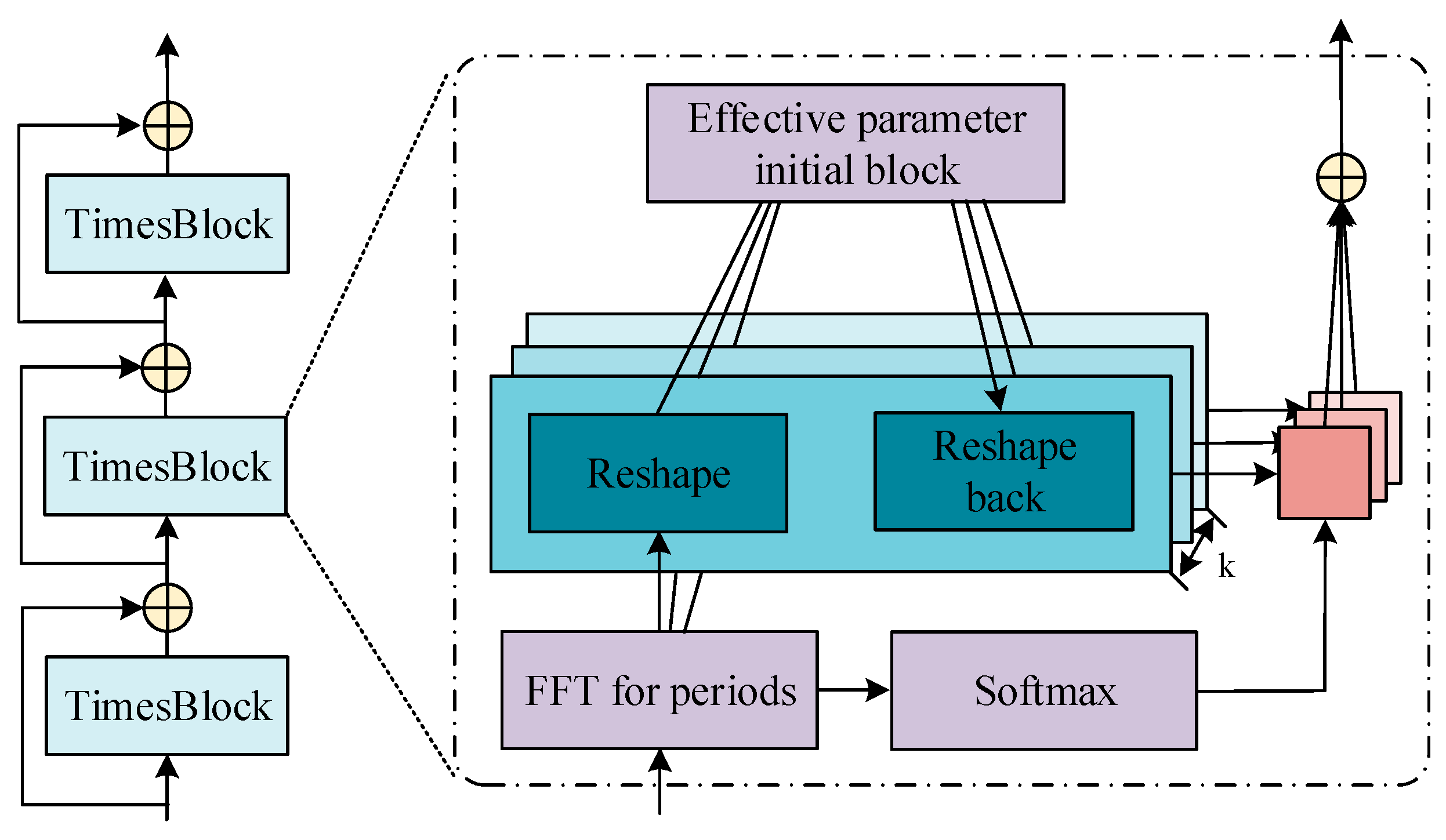

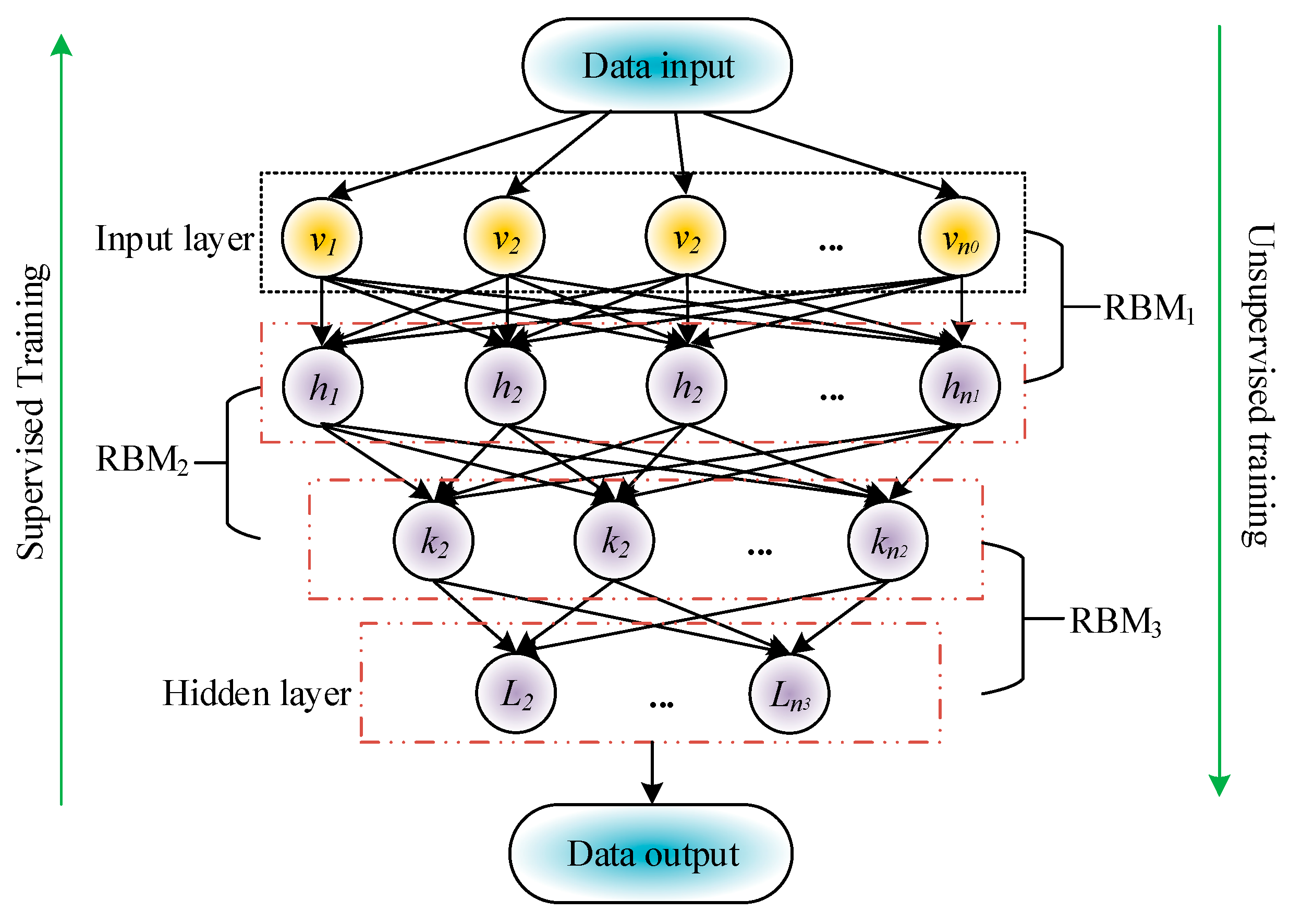
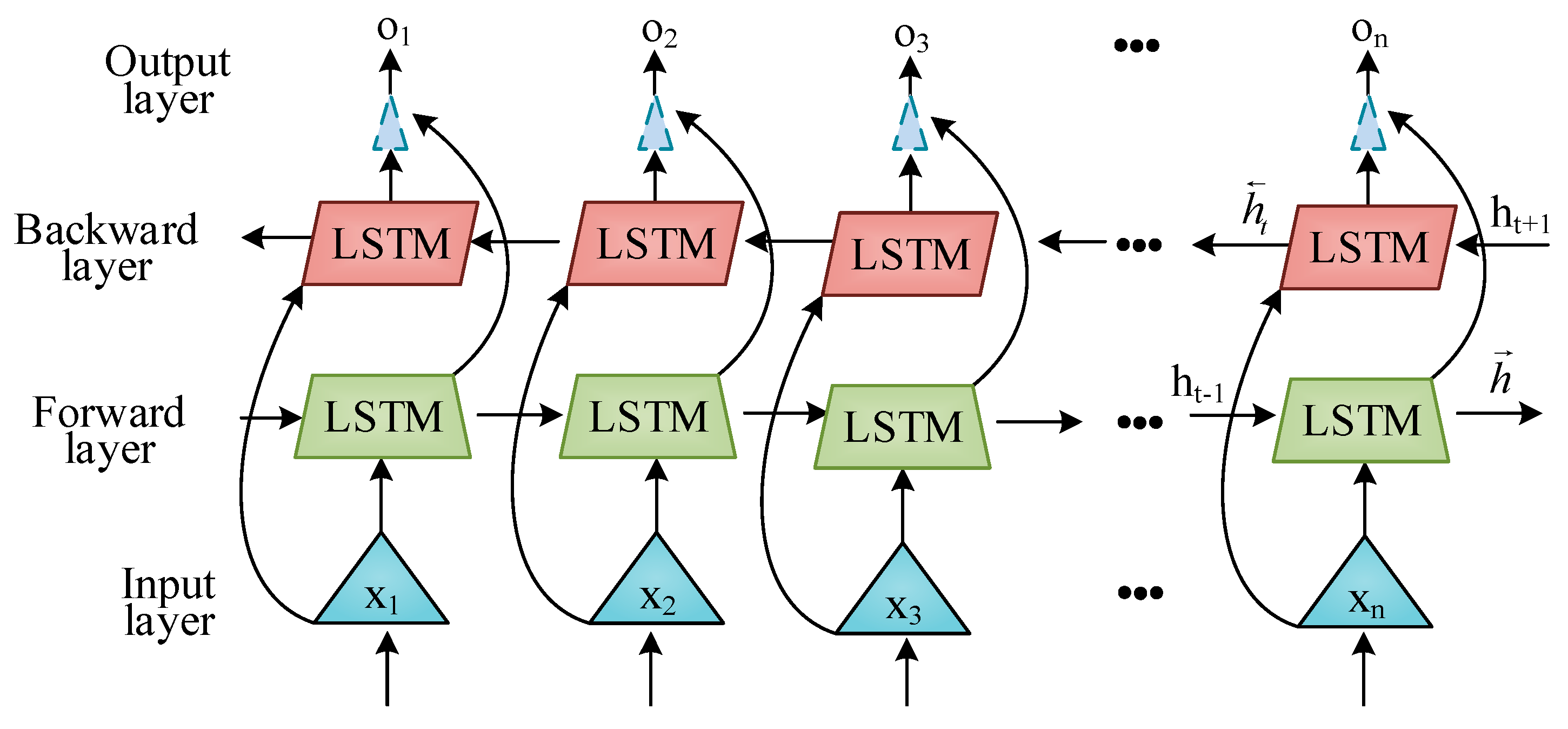


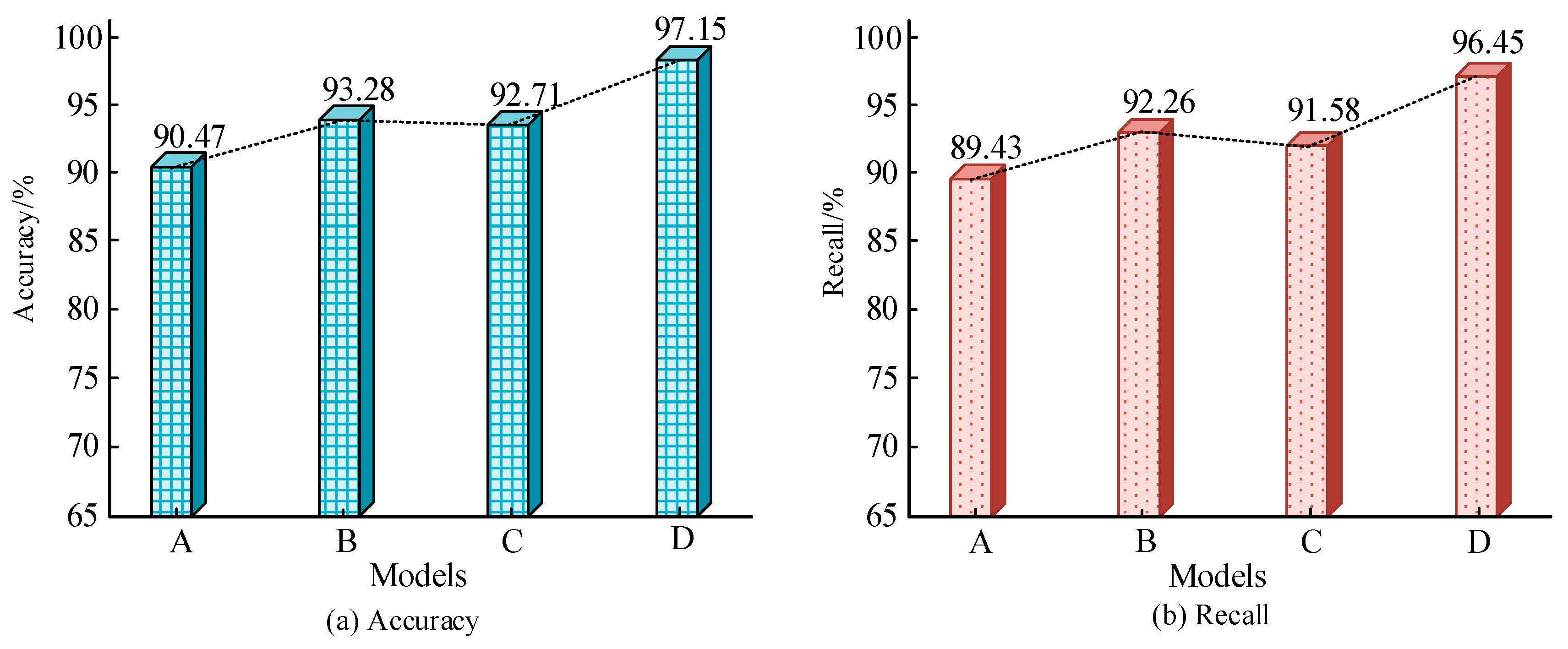
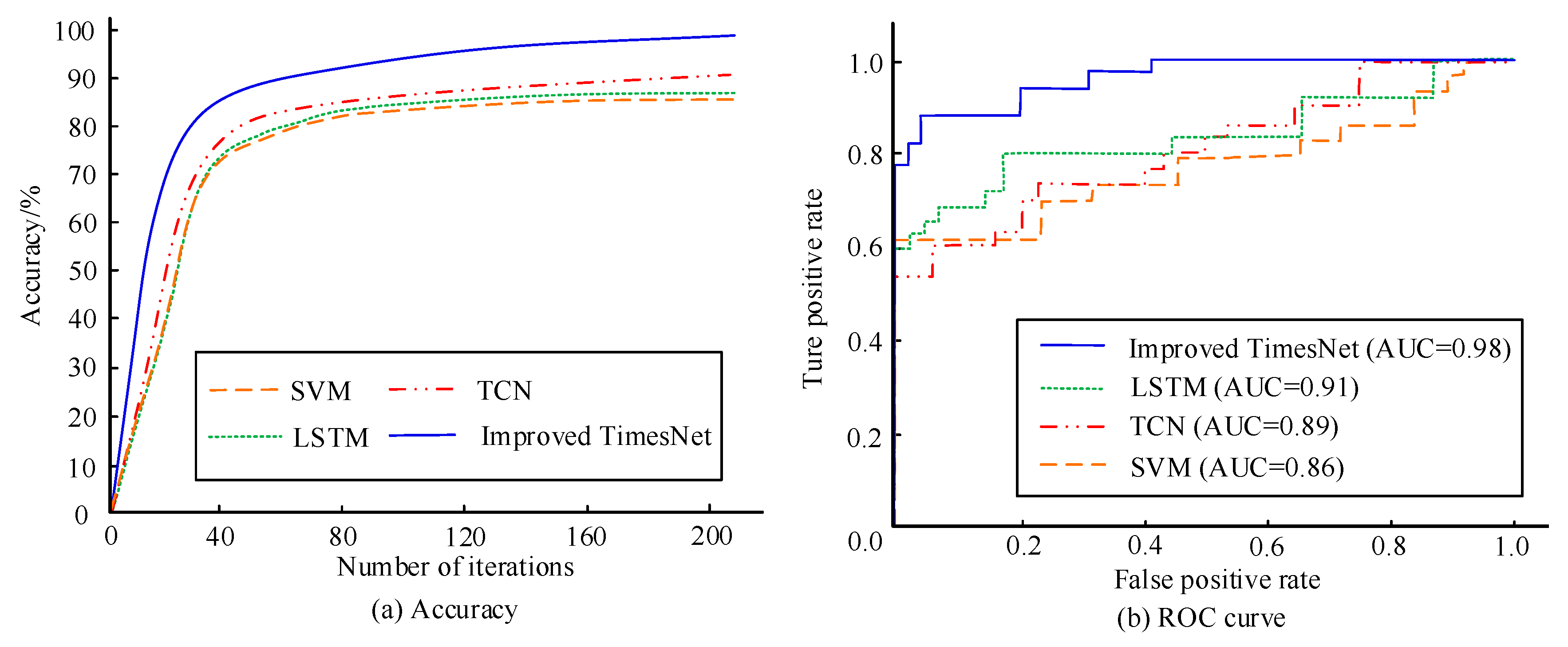

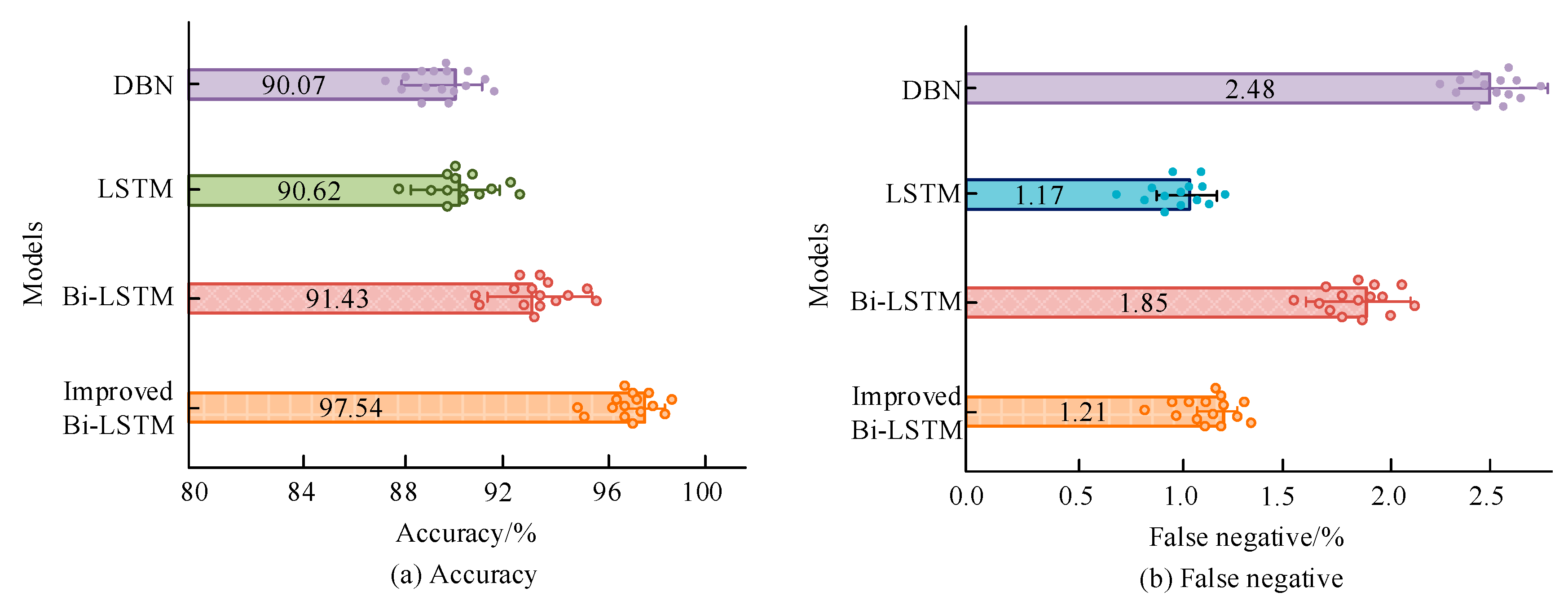
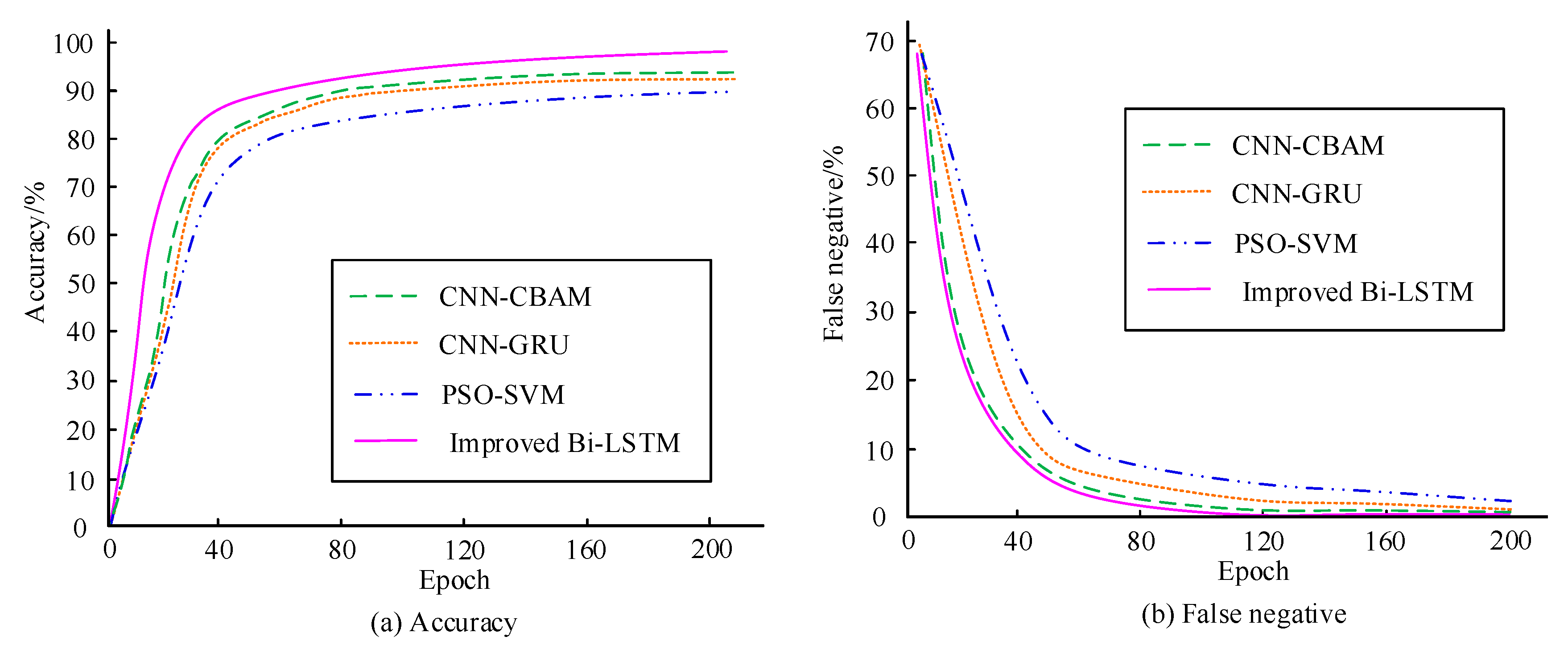

| Index | Models | |||
|---|---|---|---|---|
| GA-BPNN | ARNN | CNN-LSTM | Improved TimesNet | |
| DR/% | 88.36 | 90.04 | 93.74 | 97.04 |
| FDR/% | 2.01 | 1.82 | 1.73 | 1.21 |
| F1 value/% | 86.53 | 88.13 | 90.24 | 92.69 |
| Accuracy/% | 91.06 | 93.39 | 94.57 | 97.15 |
Disclaimer/Publisher’s Note: The statements, opinions and data contained in all publications are solely those of the individual author(s) and contributor(s) and not of MDPI and/or the editor(s). MDPI and/or the editor(s) disclaim responsibility for any injury to people or property resulting from any ideas, methods, instructions or products referred to in the content. |
© 2025 by the authors. Licensee MDPI, Basel, Switzerland. This article is an open access article distributed under the terms and conditions of the Creative Commons Attribution (CC BY) license (https://creativecommons.org/licenses/by/4.0/).
Share and Cite
Cheng, Y.; Zhao, B. Risk Assessment Method of Solar Smart Grid Network Security Based on TimesNet Model. Appl. Sci. 2025, 15, 2882. https://doi.org/10.3390/app15062882
Cheng Y, Zhao B. Risk Assessment Method of Solar Smart Grid Network Security Based on TimesNet Model. Applied Sciences. 2025; 15(6):2882. https://doi.org/10.3390/app15062882
Chicago/Turabian StyleCheng, Yushu, and Bochao Zhao. 2025. "Risk Assessment Method of Solar Smart Grid Network Security Based on TimesNet Model" Applied Sciences 15, no. 6: 2882. https://doi.org/10.3390/app15062882
APA StyleCheng, Y., & Zhao, B. (2025). Risk Assessment Method of Solar Smart Grid Network Security Based on TimesNet Model. Applied Sciences, 15(6), 2882. https://doi.org/10.3390/app15062882






